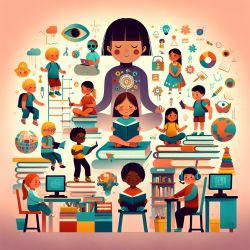As a practitioner working with children who have disabilities, it’s essential to be aware of the common visual problems these children may face. Research from the article "Common visual problems in children with disability" by Alison Salt and Jenefer Sargent provides valuable insights into the prevalence and types of visual impairments among children with disabilities, as well as practical steps for assessment and intervention.Understanding Visual Problems in Children with DisabilitiesChildren with disabilities are at a higher risk of visual impairment (VI) compared to their peers. The study highlights several common visual issues such as:- **Refractive errors:** Issues like myopia, hyperopia, and astigmatism are more prevalent.- **Strabismus:** Misalignment of the eyes, leading to difficulties in focusing.- **Cerebral Visual Impairment (CVI):** Problems with visual processing despite healthy eyes.- **Optic Atrophy:** Damage to the optic nerve affecting vision.- **Retinal Dystrophies:** Degenerative disorders of the retina.### Practical Steps for PractitionersTo improve outcomes for children with disabilities, here are some actionable steps based on the research findings:#### 1. **Comprehensive Visual Assessments**- Conduct thorough assessments, including history taking, observation, and specific tests for visual acuity and ocular health.- Utilize tools like Keeler, Teller, and Cardiff cards for measuring resolution acuity, and Lea symbols or Kay pictures for recognition acuity.#### 2. **Early Identification and Referral**- Identify visual difficulties early and refer children to eye clinics for detailed ophthalmological examinations.- Ensure that children with severe visual impairments are referred to specialist teaching teams for appropriate educational support.#### 3. **Multidisciplinary Approach**- Collaborate with a team of professionals including paediatricians, orthoptists, ophthalmologists, and educators to provide a holistic approach to care.- Pool observations and assessments to understand the impact of visual and non-visual factors on the child’s overall development.#### 4. **Parental Involvement**- Engage parents in the assessment process by gathering detailed descriptions of their child’s visual skills and daily visual performance.- Use structured questionnaires to clarify visual skills in children with neurological impairments.### Encouraging Further ResearchWhile this research provides a strong foundation, continuous learning and research are crucial. Stay updated with the latest studies and incorporate new findings into your practice to ensure the best outcomes for your students.To read the original research paper, please follow this link:
Common visual problems in children with disability.


